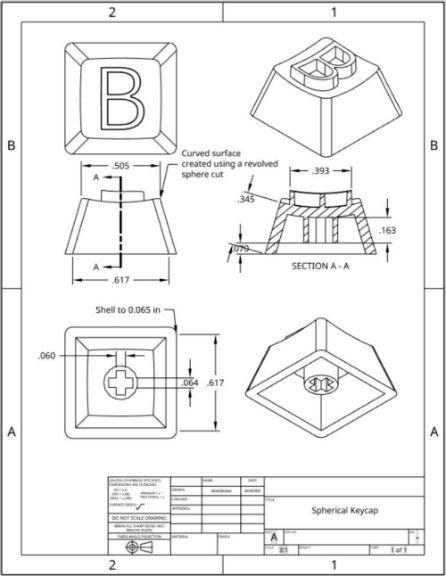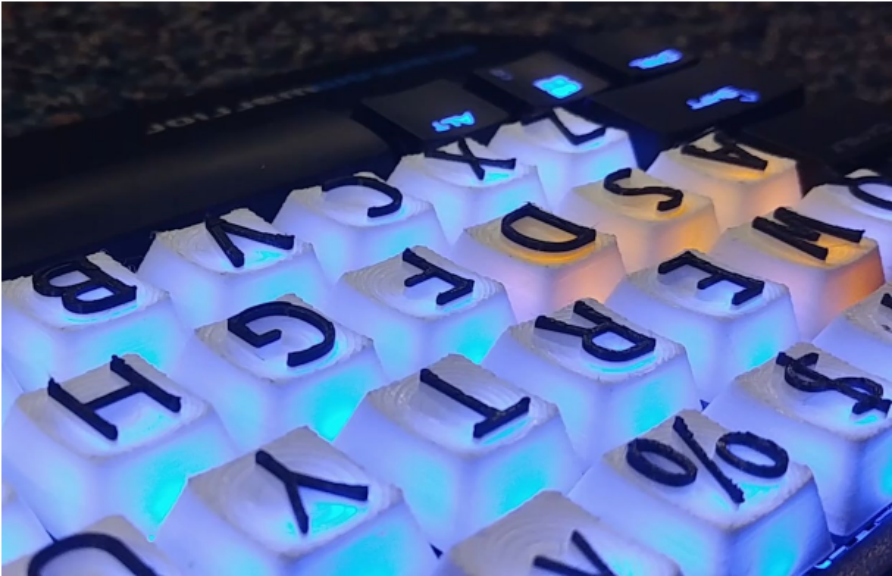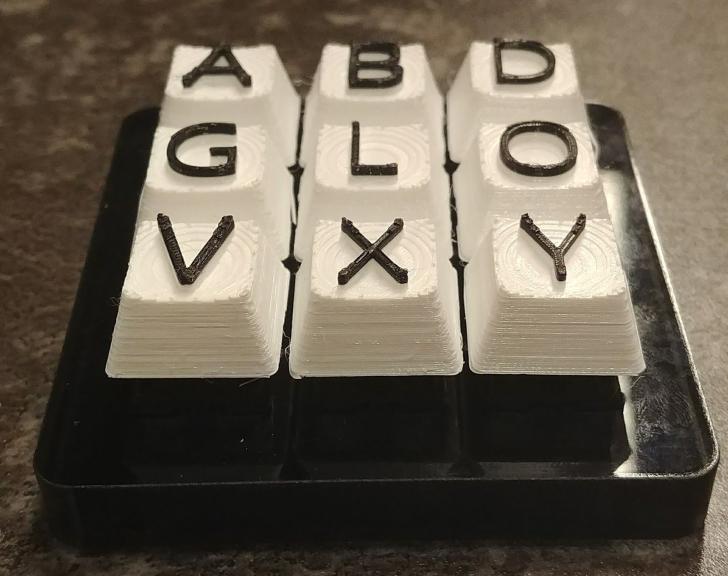Non-Braille Assistive Keyboard for Individuals with Visual Impairments
Computer keyboards currently available for individuals with visual impairments incorporate Braille lettering, but less than 10% of blind individuals can read Braille. This is especially true for those who lose their eyesight later in life due to causes such as myopic degeneration, cataracts, and cancer. These individuals find it difficult to adapt to Braille keyboards, yet simultaneously seek the normalcy of a modern keyboard as opposed to more unique adaptive devices (such as speech-to-text software programs or touch-screen technology). Thus, there are no computer keyboard designs available for the majority of individuals with visual impairments.
Key Features/Benefits
As a solution to this problem / market need, a keycap has been designed that fits on mechanical keyboards with Cherry MX switches. The prototypes are 3D printed keycaps with raised, capital letters and numbers from the English language. Contrasting colors distinguish the raised character from the keycap. One of the main advantages of this approach is that the keyboard is Braille-free, and thus accessible to more than 90% of those with visual impairments.
This keyboard design is accessible to every person with mild to severe visual impairments. Its Braille-free design allows people to use their pre-existing knowledge of the English alphabet to type. Individuals who are conscious about using indiscreet technology such as text-to-speech programs now have a standard keyboard design that still accommodates their limited vision. In addition, the high-contrast color-scheme and bold lettering will supplement tactile feedback to aid users with mild visual impairments in easily distinguishing characters on the keycaps.
Market research and customer interviews discovered that many individuals who require assistive technology to use a computer dislike newer approaches such as speech-to-text and touch screen readers. The margin of error for these devices can be relatively high, and are rather indiscreet. Additionally, the only adaptive keyboards on the market right now are Braille keyboard, which are not helpful for 90% of individuals with visual impairments. There are no similar computer keyboard designs available with the unique raised capital letter arrangement that offer a solution to provide both tactile and auditory feedback to users in a traditional keyboard format.


